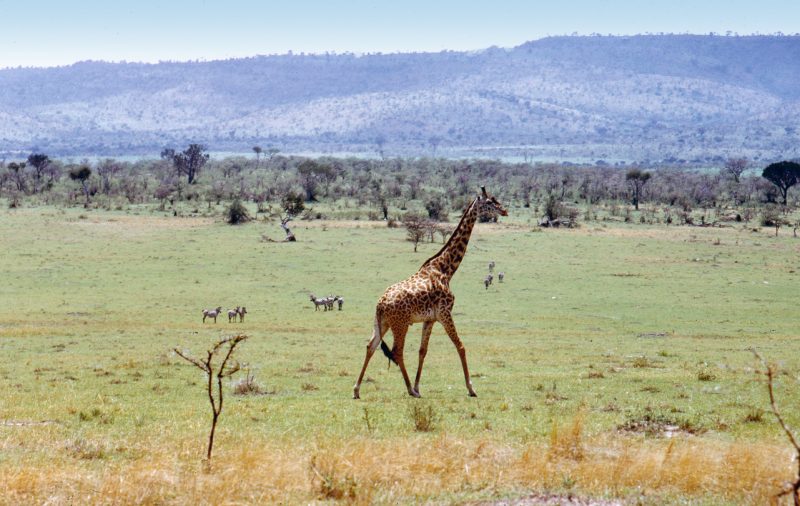An Exploratory Journey Across Mara Kenya
Kenya is renowned for its breathtaking landscapes and rich wildlife, but among its many treasures, the Mara region stands out as a jewel of natural beauty and cultural significance. Whether you are planning a safari, interested in conservation efforts, or simply fascinated by this unique area, understanding the Mara in Kenya is essential. This comprehensive guide will delve into the essence of Mara, covering everything from its geography and wildlife to conservation efforts and cultural impact.
Introduction to Mara
Mara is synonymous with the quintessential African safari experience. Located in southwestern Kenya, the Mara region encompasses the famous Maasai Mara national reserve and adjacent conservancies. Known for its stunning landscapes and incredible wildlife, Mara is a destination that draws visitors from around the globe. This guide explores the essence of Mara, from its ecological importance and wildlife to conservation challenges and cultural richness.
Geographical and environmental overview
Mara ecosystem
Mara ecosystem is a unique and diverse environment situated in southwestern Kenya. It includes the Maasai Mara National Reserve, which is renowned for its flat-topped acacia trees, rolling grasslands, and meandering rivers. The ecosystem extends into neighboring regions in Tanzania, forming part of the larger Serengeti-Mara ecosystem, which is crucial for the migratory routes of many animal species.
Mara is characterized by its savannah landscape, with a mix of grasslands, shrublands, and forests. The region is situated on the edge of the Great Rift Valley, which contributes to its distinctive topography. The Mara river, a vital water source, runs through the reserve, providing essential hydration for wildlife and supporting diverse flora and fauna.
Climate and seasons
The climate in the Mara region is classified as semi-arid, with distinct wet and dry seasons. The dry season lasts from June to October, during which temperatures are relatively cooler and wildlife congregates around water sources, making it an excellent time for game viewing. The wet season, from November to May, brings heavy rains that rejuvenate the landscape and support new growth. This period also witnesses the dramatic wildebeest migration, a highlight for many visitors.
Wildlife in the Mara
The Mara is famous for its rich biodiversity, particularly its large populations of iconic African wildlife.
Big five
The main attraction in the Mara is the chance to see the big five. They are lions, leopards, elephants, buffaloes, and rhinoceroses. The Maasai Mara national reserve provides a haven for these majestic animals. Lions are commonly spotted resting in the grasslands or hunting during early mornings and late afternoons. Leopards, though more elusive, can often be seen lounging in the trees or stalking prey. Elephants and buffaloes are frequently seen in herds, roaming the vast savannahs, while rhinos are protected in dedicated areas due to their endangered status.
Migration and seasonal patterns
The most spectacular natural phenomena in the Mara is the Great Migration. Every year, millions of wildebeest, zebras, and gazelles migrate from the Serengeti in Tanzania to the Maasai Mara in search of fresh grazing grounds. This migration typically occurs between July and October and includes dramatic river crossings, which are a thrilling sight for visitors. The migration is a key event in the Mara ecosystem, influencing the behaviour and survival of numerous species.
Conservation efforts and challenges
The Mara region faces several conservation challenges, but there are ongoing efforts to preserve its unique environment and wildlife.
Community-based conservation
Community-based conservation initiatives are crucial in the Mara. Local communities, including the Maasai, play a significant role in protecting the region’s wildlife and habitats. These programs focus on promoting sustainable land use, supporting anti-poaching efforts, and fostering tourism that benefits local communities. The Maasai Mara Wildlife Conservancies Association is one such organisation that works to ensure that tourism revenue supports both conservation and community development.
Threats to the ecosystem
Despite these efforts, the Mara ecosystem faces various threats. Poaching, habitat loss, and climate change are significant concerns. Poaching for ivory and rhino horn continues to pose a risk to wildlife, while expanding agricultural activities and human settlement encroach upon natural habitats. Climate change impacts weather patterns and water availability, affecting both flora and fauna. Addressing these challenges requires a coordinated approach involving governments, conservation organisations, and local communities.
Cultural significance of the Mara
The Mara region is not only a wildlife haven but also a place of cultural significance. The Maasai people, who live in and around the Mara, have a rich heritage that is deeply intertwined with the land.
Maasai community
Maasai are a semi-nomadic pastoralist community with distinctive dress and customs. Their traditional lifestyle revolves around herding cattle, which are central to their culture and economy. The Maasai people have a deep spiritual connection to the land and its wildlife. You will find that in their traditional practices and beliefs.
Cultural practices and festivals
Maasai community celebrates various cultural festivals and ceremonies that offer visitors a glimpse into their way of life. These include traditional dances, rituals, and ceremonies that mark important life events such as circumcision and initiation rites. Visitors to the Mara can experience Maasai culture through guided village tours, cultural performances, and interactions with local residents.
Tourism and travel tips
For those planning a visit to the Mara, there are several key considerations to ensure a memorable and enjoyable experience.
Top safari experiences
-
- Game drives: A safari in the Mara is incomplete without a game drive. Early morning and late afternoon drives offer the best chances to see wildlife in action. Experienced guides provide insights into animal behavior and the ecosystem.
- Hot air balloon safaris: For a unique perspective, consider a hot air balloon safari. Floating above the savannah at sunrise provides stunning views and an unforgettable experience.
- Walking safaris: Explore the Mara on foot with guided walking safaris. This option allows you to observe smaller wildlife and learn about the ecosystem from a different vantage point.
Accommodation options
Mara offers a range of accommodation options to suit different preferences and budgets. From luxurious lodges and tented camps to more budget-friendly options, visitors can choose accommodations that provide comfort and convenience while allowing them to experience the natural beauty of the region.
-
- Luxury lodges: These offer high-end amenities, including spacious suites, private decks, and gourmet dining. Examples include the Mara Serena Safari Lodge and the Governor’s Camps.
- Tented camps: For a more immersive experience, consider staying in a tented camp. These camps offer a blend of comfort and adventure, with options like the Mahali Mzuri and the Mara Intrepids.
- Budget-friendly options: There are also more affordable lodges and campsites for travelers on a budget, providing basic amenities and good access to wildlife viewing.
Conclusion
The Mara region in Kenya is a treasure trove of natural beauty, wildlife, and cultural richness. From the awe-inspiring Great Migration to the vibrant Maasai culture, the Mara offers an unparalleled safari experience. Understanding the geographical, ecological, and cultural aspects of this region enhances the appreciation of its significance and the importance of its conservation.
Whether you’re a seasoned traveler or planning your first safari, the Mara promises an adventure filled with unforgettable moments and profound insights into the interconnectedness of wildlife, environment, and culture. Embrace the opportunity to explore this iconic destination and witness firsthand the wonders that make the Mara a true marvel of the natural world.





